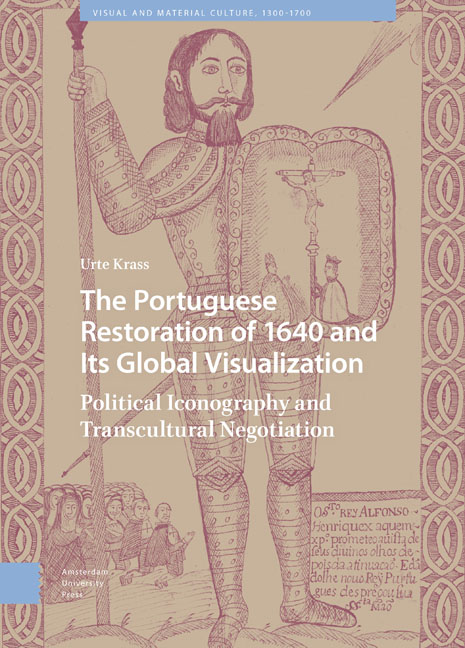 The Portuguese Restoration of 1640 and Its Global Visualization
The Portuguese Restoration of 1640 and Its Global Visualization Book contents
- Frontmatter
- Contents
- List of Illustrations
- Acknowledgments
- Introduction
- 1 Signs, Miracles, and Conspiratorial Images
- 2 The Lisbon Miracle of the Crucifix (1 December 1640)
- 3 The New King’s Oath (15 December 1640)
- 4 Acclamations
- 5 Lisbon
- 6 Images in Diplomatic Service
- 7 The Imaculada as Portugal’s Patroness
- 8 The Funeral Apparatus of John IV (November 1656)
- 9 The Drawings in the Treatise of António de São Thiago (Goa 1659)
- 10 Ivory Good Shepherds as Visualizations of the Portuguese Restoration
- Conclusion
- Bibliography
- Index
Conclusion
Published online by Cambridge University Press: 13 February 2024
- Frontmatter
- Contents
- List of Illustrations
- Acknowledgments
- Introduction
- 1 Signs, Miracles, and Conspiratorial Images
- 2 The Lisbon Miracle of the Crucifix (1 December 1640)
- 3 The New King’s Oath (15 December 1640)
- 4 Acclamations
- 5 Lisbon
- 6 Images in Diplomatic Service
- 7 The Imaculada as Portugal’s Patroness
- 8 The Funeral Apparatus of John IV (November 1656)
- 9 The Drawings in the Treatise of António de São Thiago (Goa 1659)
- 10 Ivory Good Shepherds as Visualizations of the Portuguese Restoration
- Conclusion
- Bibliography
- Index
Summary
Abstract: A painting in the Lisbon monastery of Madre de Deus shows how the iconography of the good shepherd on the mountain, which had originated in Goa, had a lasting effect on other pictorial worlds: the figure of Saint Francis becomes a vehicle through which the iconography of the first Portuguese king can be combined in a novel way with the Brigantine iconography of the sleeping ruler of peace on the rock. A summary draws together the book's different threads and provides an overview of the different functions of the heterogeneous images and visualizations. The global interconnections of the images are outlined and an attempt is made to explain why the most detailed visualizations were created in the regions that were furthest from the site of the coup d’état.
Keywords: Madre de Deus convent in Lisbon, St. Francis, entanglements, distance
Today, in Lisbon's Madre de Deus church, visitors find a painting by Bento Coelho da Silveira, created in 1650. It is part of a cycle of images devoted to the lives of Saints Francis and Clara (fig. 184). The work depicts the dream of St. Francis, but not as presented in the saint's hagiography. In the vita accounts, the young Francis is still engaged in worldly things and dreams of a palace full of weapons and armor. In the midst of the vision, he hears a voice instructing him to abandon his military aspirations. In another episode in the saint's life, a crucifix summons Francis to renovate the dilapidated church.
In Coelho's painting, the dream vision of an armament-filled palace is combined with the Miracle of the Crucifix. As we have seen, this combination was widely promulgated in mid-seventeenth-century Portugal in another context: that of the Vision of Ourique, part and parcel of Portugal's founding mythology (figs. 77, 127–30). We find the discarded weapons in the left foreground, and there as well is a crucifix looking down upon the narrative's protagonist. The representation of St. Francis is thus linked interpictorially with the iconography of Portuguese political providentialism; or, in other words, the Portuguese Restoration's image worlds encroach on other pictorial themes.
- Type
- Chapter
- Information
- The Portuguese Restoration of 1640 and Its Global VisualizationPolitical Iconography and Transcultural Negotiation, pp. 449 - 458Publisher: Amsterdam University PressPrint publication year: 2023


